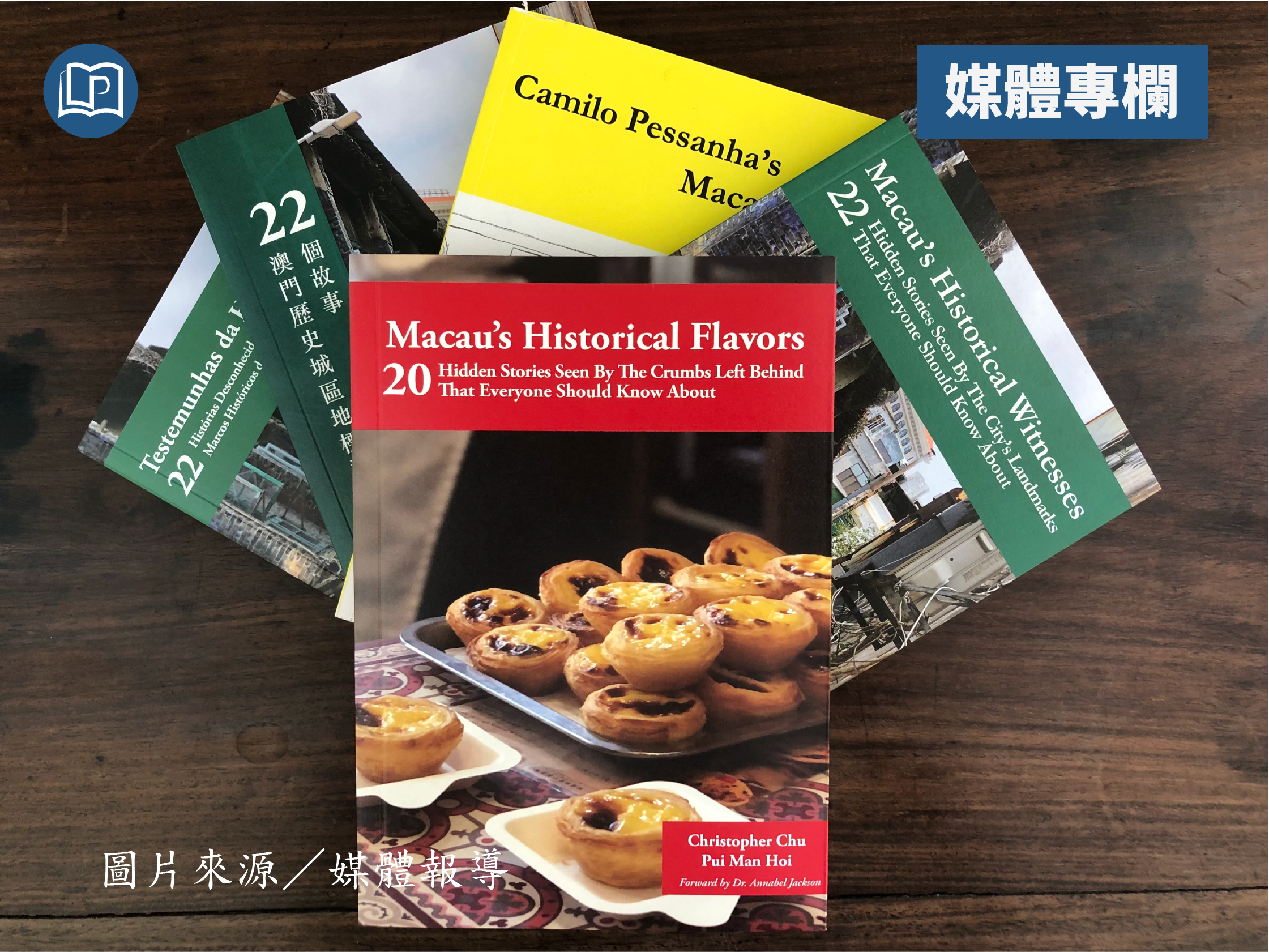Macau’s history tells an extraordinary story. By the 16th century, the Portuguese had reached the southern Chinese peninsula, establishing a trading base by 1557. Besides merchants, clergymen arrived, positioning Macau into a centre for Catholic evangelism by training priests who would later go on to proselytise throughout Asia, including Japan.
European and Chinese individuals had previously crossed paths, though those encounters often occurred within the trading ports of Eastern Africa or the Middle East. But it was in Macau where communities and their respective ideologies intertwined, fusing together a knowledge exchange that remains visible, and even tasted, today.
In the spirit of collaboration, a husband and wife team have taken a creative approach to narrate Macau’s hidden past. Macau’s Historical Witnesses, co-authored by American-born Christopher Chu and Macau-born Maggie Pui Man Hoi. It was published amid the pandemic in late 2022. Neither of them historians nor having any lineages to Portuguese ancestry. Instead, they pulled from their own, less relevant backgrounds to tell stories that often go overlooked amid the city’s neon lights and Michelin star restaurants.
Chu, a former investment analyst and financial journalist, channelled his corporate background of succinct storytelling, where abbreviated messaging is key. Hoi, an associate professor in pharmacology at the University of Macau, applied her science experience of translating complex research into accessible insights.
“There’s no new information added that is not already well documented elsewhere,” Chu says. “But what we did was narrate Macau’s history by putting the audience into the story. This is done not by restating a list of facts, but by writing thematic episodes, seen from the perspective of the city landmarks, which in fact makes the famed buildings of Macau the audience of our book,” Chu adds.
Macau’s Historical Witnesses becomes difficult to categorise. It is too thin to be a textbook but also too historical to be a travel blog. Regardless, the niche space immediately found an interested community in Macau. Within a year, Macau’s Historical Witnesses became available in Chinese, translated by Sichuan-born Lily Hu, adapting the title 見證澳門. Its Portuguese sibling, Testemunhas da História de Macau by Macau-born Ivo Vital, was published this year.
The format incubated other titles, including the duo’s recently published Macau’s Historical Flavors. With the first two words paying homage to their first book. Though Chu and Hoi often refer to this as their “food book,” there are no recipes nor recommended eateries, but like the first, a collection of stories recounting Macau’s history from the perspective of the spices, crumbs, and other so called “foodprints” (a play on the word footprints), left behind.
“Just like how the former Leal Senado Building or the nearby Casa de Misericórdia tell stories about Macau, so too does the food,” Hoi explains. “Each type of flavor tells a story that links Macau to a larger story. But when something delicious is put in front of you, eating trumps storytelling every time” she adds.
Macau has an extraordinary culinary history, shaped by the diverse communities that have lived there, notably the Europeans, Chinese, Africans, and Southeast Asians. The availability of spices incubated famous dishes include the sweet Portuguese egg tart, savory African chicken, and the iconic pork chop bun. Traditional ingredients such as salted fish and coconut milk also play a significant role inside Macau’s kitchens.
For those wanting to learn a dish’s origin story, they will be disappointed, since the book is closer to an abbreviated historical narrative. Chapter one traces the 15th century western voyages of Chinese admiral Zheng He, which is followed by Portuguese explorer Vasco Da Gama’s journey east in the second. Neither of these men ever stepped foot on the peninsula that would become Macau, but the spices carried aboard those ships would eventually make their way to the enclave, importing a story with it.
Names familiar in Macau history do appear. Peter Mundy, a 17th century English diplomat, described his infatuations with lycées while looking out from the steps of St. Paul’s Church. Harriet Low, the 19th century American diarist, journaled about her slapjack parties held adjacent to the Cathedral of the Nativity of Our Lady. Her guests are deeply tied to Hong Kong’s history, including John Francis Davis, the second governor who served between 1844 to 1848.
Similar to their first book, Macau’s Historical Flavors recalls Macau’s legacy through the lens of its cuisine, placing the reader inside the narrative while the spices take their place as silent spectators. “Macau’s Historical Witnesses explains what you see, while Macau’s Historical Flavors describe what you smell, Chu remarks facetiously.
When the two Cambridge University authors began their literary project, terminology like self-isolation and social distancing were part of the normal conversations. When asked what her proudest achievement with this entire endeavour has been, Hoi says that fostering a sense of community among local readers eager to learn more about their home was particularly meaningful.
Both continue to use their literature professionally. Chu, a former fund manager who no longer stares at his Bloomberg terminal, is now an editor for Macao News, where he remains engaged in writing stories about the city. Hoi uses their books to promote cultural exchanges and as a classroom tool for ESL (English as a Second Language) students, given the focus on creative writing.
The duo are also collaborating with the friends they have made along the way. Chinese translator Hu intends to build on her PhD research and leverage the book’s trilingual format to reach a younger audience, one that envisions a partnership with local artists to publish a children’s book for early education. Macanese Vital hopes the book’s respective editions will introduce Macao’s story to broader audiences across the Greater Bay Area and Portuguese-speaking countries, showing that, even after four centuries in Macau, knowledge exchanges are still taking place.
【EJ Insight】Learning Macau’s History By Seeing Landmarks and Eating The Food
”https://m.chinanews.com/wap/detail/chs/sp/10463766.shtml?params=eyJwbGF5TW9kZSI6InZlcnRpY2FsIn0=
